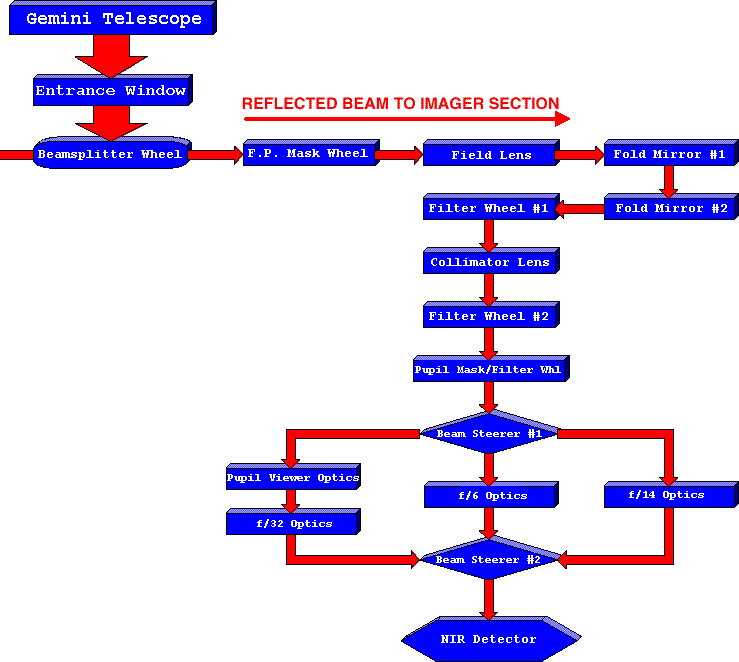
Capability Summary
- AO (NGS, LGS, Super Seeing) available with Altair
- Total wavelength range = 1−5 µm
Imaging (Read more)
- Three choices of cameras:
| Camera | Sampling | FOV | comments |
| f/32 | 0.022"/pixel | 22"x22" | best suited for 2.5−5 µm |
| f/14 | 0.050"/pixel | 51" x 51" | no M band |
| f/6 | 0.117"/pixel | 120"×120" | not offered with AO best suited for 1−2.5 µm |
Spectroscopy
- DECOMMISSIONED
Guiding Options (Read more)
- PWFS
- Altair (NGS, LGS, LGS+P1)
Get the sensitivity
Get to the integration time calculator
NIRI was built by the University of Hawaii's Institute for Astronomy.
The current primary reference to be cited by users of NIRI on Gemini is:
"The Gemini Near-Infrared Imager (NIRI)", Hodapp, Klaus W.; Jensen, Joseph B.; Irwin, Everett M.; Yamada, Hubert; Chung, Randolph; Fletcher, Kent; Robertson, Louis; Hora, Joseph L.; Simons, Douglas A.; Mays, Wendy; Nolan, Robert; Bec, Matthieu; Merrill, Michael; Fowler, Albert M., (2003), PASP, 115, p. 1388-1406
To be cited by users of NIRI in any of its modes

Announcements
Instrument Team
gn Instrument Scientist

gn Additional Support Staff
- Zachary Hartman
- Sandy Leggett
- Brian C. Lemaux
- Clara Martínez-Vázquez
- Teo Močnik
- Andy Stephens
Email: niri_science@gemini.edu